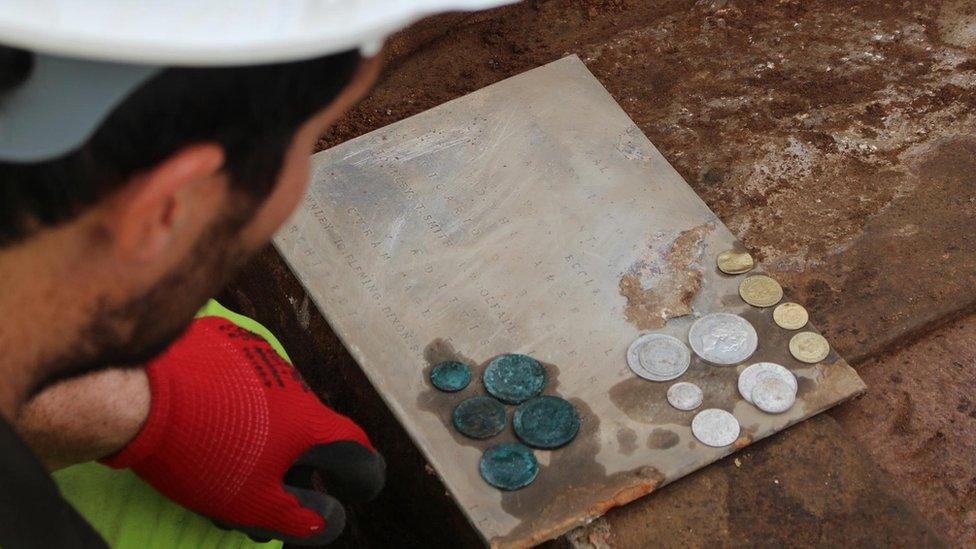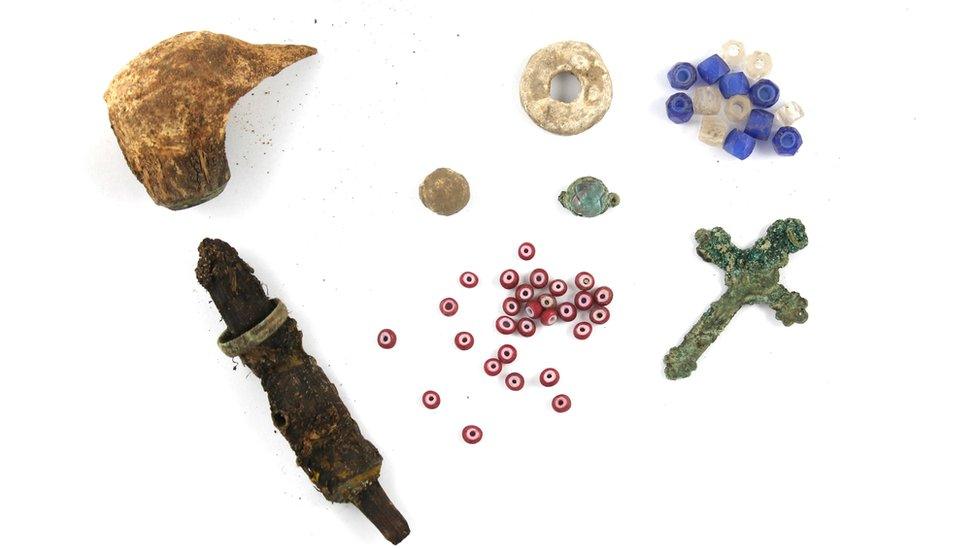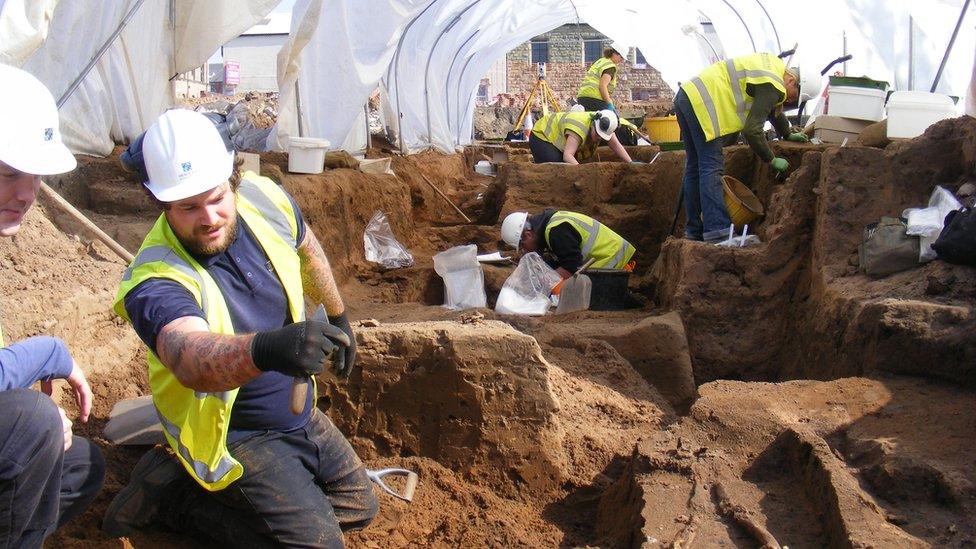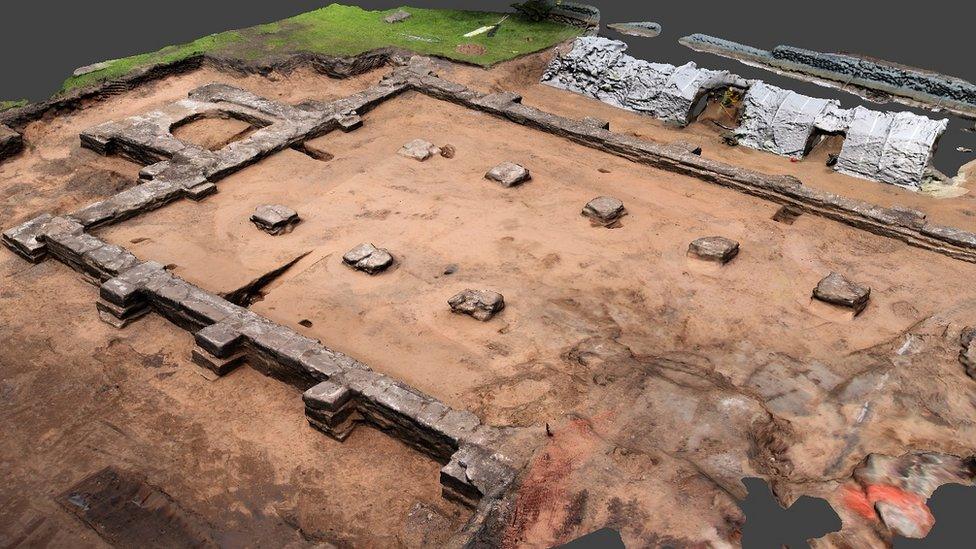Blackburn archaeological survey: Bodies of 800 young children found
- Published

The remains of two people were found in one grave
The bodies of about 800 children aged under six have been unearthed by archaeologists ahead of the construction of a road in Lancashire.
They were among 1,967 bodies exhumed at St Peter's Burial Ground, which opened in 1821 in Blackburn.
The large number of children found is being put down to a lack of good sanitation and medicines leading to a high mortality rate.
Many of them would have died from infections, the archaeologists believe.
Bodies were exhumed from about 30% of the burial ground, which was in "intense use" up to the 1860s, a spokeswoman for Blackburn with Darwen Borough Council said.

Sixteen coins from 1821 - when George IV was king - were also found

Children were found buried with colourful glass bead jewellery
Dave Henderson, an expert in the study of bones with Headland Archaeology, said full analysis of the skeletons had "barely started" but the team believed most of the children had died from infections in the lungs and guts.
He said: "They would have died quite quickly so the signs may not turn up in their skeletons."
He said the town was becoming overcrowded at the time as it was "a very large centre for the industrial mills and the population grew very quickly".
The work could "throw light on the lives of ordinary people" outside London, where most previous large studies of this era have been carried out, he said.

Public health in the 1800s
As the Industrial Revolution developed the population grew and workers' health and welfare deteriorated
The death rate nearly doubled in major cities between 1831 and 1844
This was partly due to a lack of available housing, which caused widespread disease and poor health
A movement toward sanitary reform led to the establishment of public health institutions
The Poor Law Commission argued that spending on preventative measures would ultimately amount to less than the costs of disease

Records of 176 memorial stones showed the most common names for girls were Elizabeth and Mary, while John and Thomas were popular for boys.
Among the finds was a "time capsule", containing 16 coins in circulation at the time.
Experts believe one of the men buried at the site was a soldier injured in the Crimean War.

Archaeologists worked on 30% of the burial ground in Blackburn

An artist's impression of the foundations of the Georgian-era church
Julie Franklin, finds manager, said objects found in graves - including "some incredibly poignant findings of hands still bearing cheap brass wedding rings, or children buried with colourful glass bead jewellery" - revealed what was important to their loved ones.
Some burials continued in existing family plots at the graveyard until 1945.
St Peter's Church, which would have seated 1,500 parishioners, became dilapidated in the mid-20th Century and was demolished to ground level in 1976.
The Bishop of Blackburn will hold a memorial service this summer and reburials will take place in a different part of the graveyard.
The archaeological work on the area, which will be used for the building of the Freckleton Street link road, was commissioned by Capita on behalf of the council.